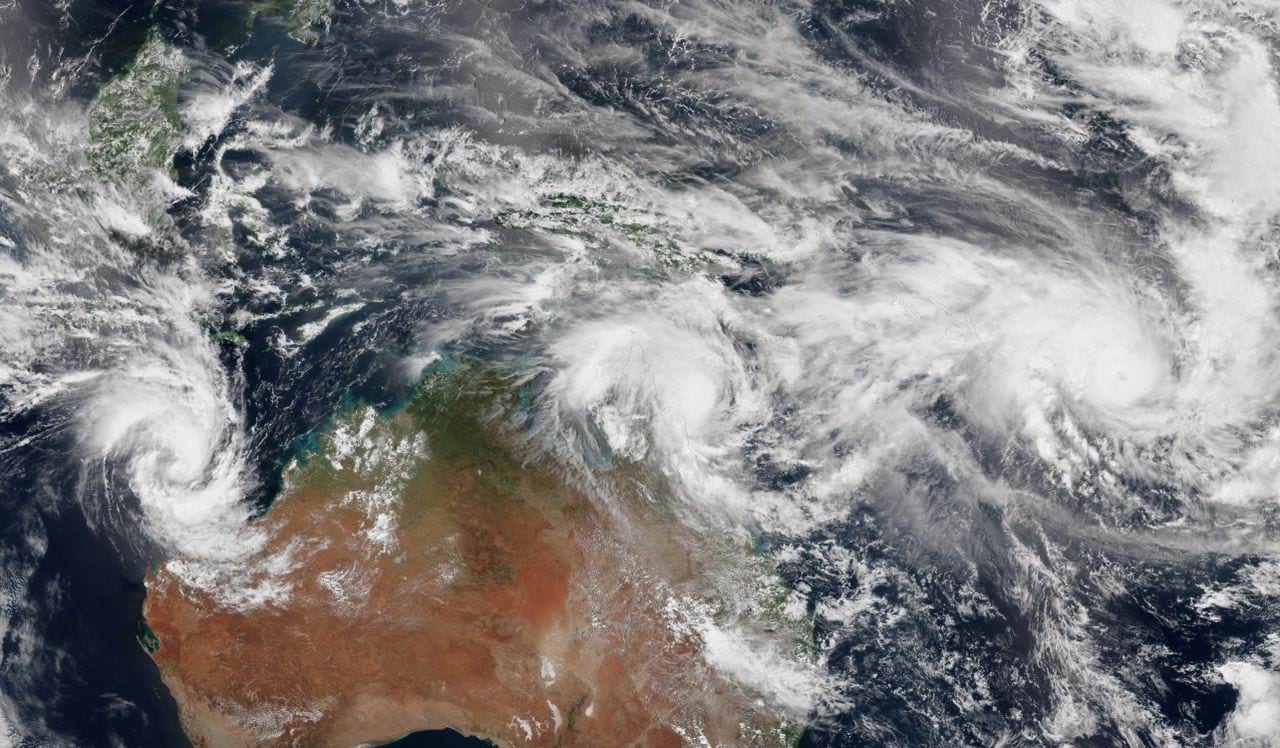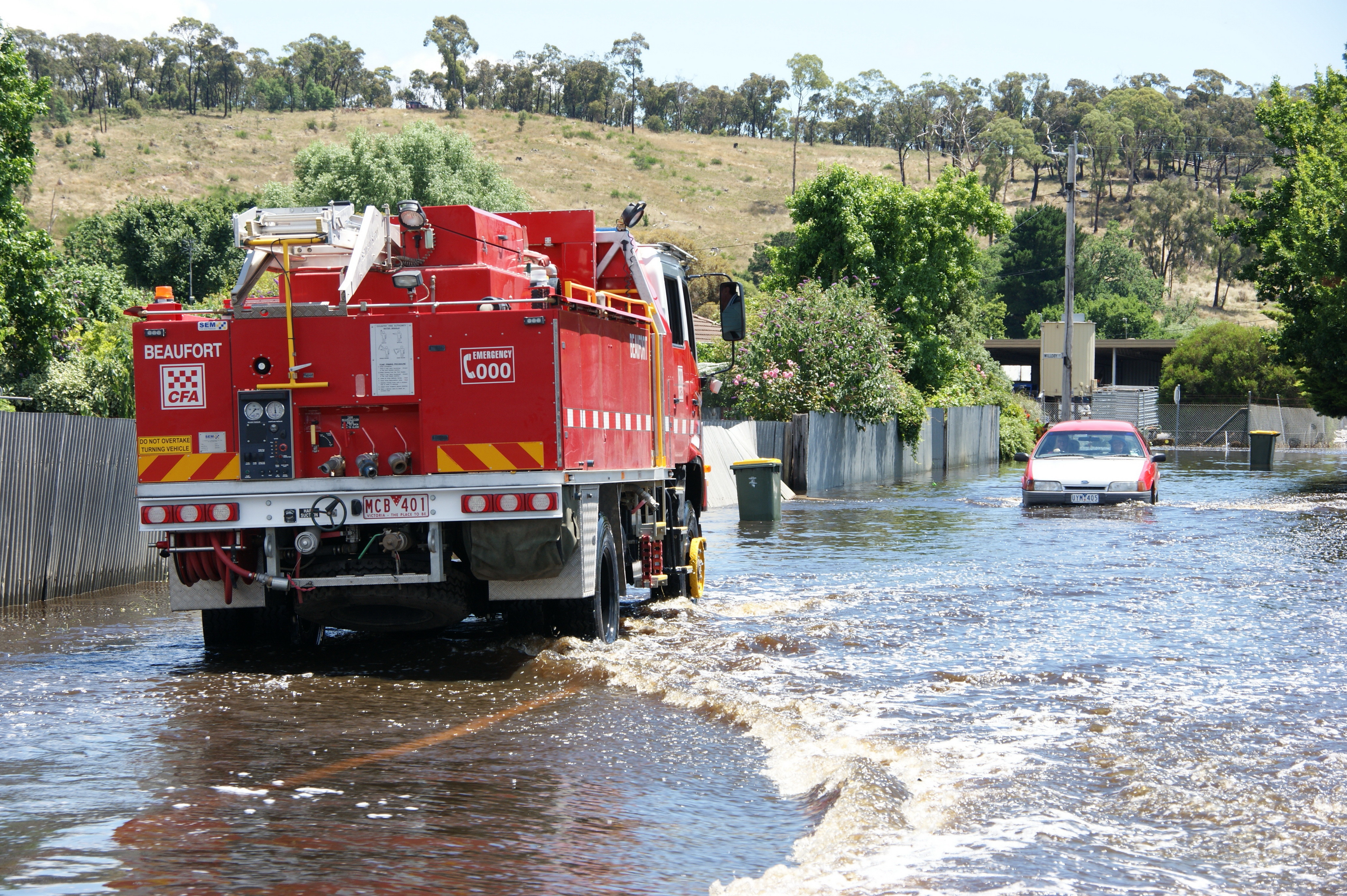Case study Understanding the risks of severe winds in South-East Queensland
How Geoscience Australia used scientific data to assess potential tropical cyclone and severe thunderstorm impact on South-East Queensland communities.
Page last updated:19 May 2022

The problem
Limited understanding of the severe wind risk from tropical cyclones and thunderstorms
South-East Queensland (SEQ) is regularly subject to severe storms that create damaging winds from thunderstorms, tropical cyclones and east coast low activity. The region has high population density and substantial community infrastructure, with severe storms historically damaging older residential housing.
Findings from the Severe Wind Hazard Assessment for Queensland (SWHA-Q) show that the consequences of a severe tropical cyclone impacting SEQ would be significant, presenting a range of challenges for both local and state governments. The risks posed by severe winds are currently not well understood, with limited research and information available for communities to draw upon when planning strategies for mitigating severe wind risks.
The solution
Collaborating to assess severe wind risk and impact
In January 2020, Geoscience Australia started a two-year project to improve understanding of the impact and risk of severe winds in six local government areas (LGAs) in SEQ: Noosa Shire, Sunshine Coast, Moreton Bay, Redland City, Brisbane City and the City of Gold Coast.
The Severe Wind Hazard Assessment for South-East Queensland (SWHA (SEQ)) project was undertaken in partnership with Queensland Fire and Emergency Services (QFES), as well as additional stakeholders including James Cook University, University of Queensland, Insurance Council of Australia, Insurance Australia Group, Suncorp and CoreLogic.
SWHA (SEQ) assessed the risk of severe wind hazard from both cyclonic and thunderstorm activity in the LGAs, improved exposure information across the study area, and modelled the vulnerability of some detached residential building types in the study area. The project detailed strategies for mitigating the wind vulnerability of houses, and assessed the economic effectiveness of each strategy.
Geoscience Australia works with state and local governments and the emergency management industry sector across Australia to develop local hazard assessments. For more information, contact hazards@ga.gov.au
How we got there
Assessing severe wind hazard risk and vulnerability across six SEQ local government areas
As part of the SWHA (SEQ) project, across all six LGAs, Geoscience Australia:
- assessed severe wind hazard (cyclonic and thunderstorm)
- updated the National Exposure Information System (NEXIS) with local building information for detached residential homes
- assessed the vulnerability of five detached house types (for both their as-built state and with two levels of retrofit applied)
- assessed the wind risk for the total detached residential home building stock
- assessed the wind vulnerability of strata title properties based on damage investigation and insurance loss data, and research commissioned by the Insurance Council of Australia
- developed strategies for mitigating the wind vulnerability of selected house types and assessed the economic effectiveness of each strategy
- ran simulations assessing the reduction in risk to houses if they undertook retrofit measures
- provided guidance on selection of potential places of refuge and last resort in the event of a severe wind hazard event
- simulated two severe tropical cyclone event scenarios affecting all six LGAs at once, assessing the impacts and emergency management logistics
- drew upon data and research from the BNHCRC Improving the Resilience of Existing Housing to Severe Wind Events project, completed in partnership with the James Cook University, which examined the vulnerability of older residential homes in Australia and discussed the cost-effectiveness of methods for mitigating this vulnerability
- outlined the implications of urban growth, development and building regulations to future hazard exposure and risk
- evaluated the expected influences of climate change on future wind hazard in SEQ.
Looking forward
Informing severe wind hazard emergency plans across Queensland and beyond
- Geoscience Australia’s SWHA (SEQ) project enables local governments and the emergency management sector to engage more effectively with communities about the future risk of severe wind hazard.
- The strategies outlined in this project have broader application to other local government areas across Queensland and Australia, informing local, regional and state planning around future potential severe wind risk and building regulations.
- The project findings provide an improved understanding of risk and the effectiveness of building level mitigation. They are presenting the building industry with improved options in the retrofitting of high-risk residential homes.
- Future Geoscience Australia research on the impact of climate change on wind hazard in SEQ could help to further clarify strategic risk treatment strategies across the state.
How you can strengthen your resilience to severe wind
Collaborate with us
Geoscience Australia collaborates with governments, academic researchers, industry organisations and communities to develop targeted impact and risk assessments, to underpin planning and preparedness to natural and man-made hazards.
Severe wind hazard resources
Our tropical cyclone and severe wind resources can help identify your region’s high-threat areas so you can make better-informed natural hazard decisions.
Contact hazards@ga.gov.au to learn more about Geoscience Australia's community safety work in the field of mitigation and resilience.









